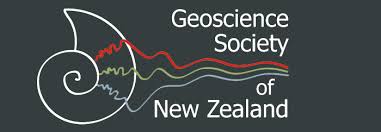Tuesday 29 October 2019 at 7.30pm
Holt Planetarium, Napier Boys High School, Chambers Street, Napier

Dr Bill Fry, Research Seimologist, GNS Science
Any country that borders the ocean is prone to tsunami. New Zealand is no exception and is exposed to tsunami from distant (e.g. South America), regional (e.g. Kermadec) and local (e.g. Hikurangi and Puysegur) earthquake sources. It has recently been recognized that during great subduction earthquakes (magnitude > 8) to the north of New Zealand along the Kermadec trench, the densely populated coastal areas on the north coast of New Zealand may not experience shaking that is significant enough to trigger effective and widespread self-evacuation. Since 2001, the Kermadec trench has generated over a dozen subduction earthquakes with magnitude > 6.5 that have not been strongly felt in north-western New Zealand, the largest with magnitude 7.7. A tsunami-generating earthquake in this region could potentially leave 10s of thousands of people exposed. The lack of obvious natural warning signs coupled with short tsunami travel times (~ 45 to 90+ minutes) from these earthquakes poses a significant risk to these communities; a risk which must be addressed by supplementing natural warning with a cautious interpretation of available instrumental data. Lack of strong shaking from these earthquakes is a function of both the most basic characteristic of earthquake ground shaking (the asymmetric way seismic energy from the earthquake source spreads out and travels to New Zealand) and the loss of seismic energy as waves travel through the volcanic region between Taupo and Tonga. These effects combine to reduce the ability of natural warning based on ground shaking to keep communities safe, and are likely applicable to major earthquake scenarios in other regions of the world. This finding suggests that for optimal reduction of loss of life during large regional earthquakes, self-evacuation messaging must be carefully explained and supplemented with scientific monitoring and alerting mechanisms to protect vulnerable populations.
Bill Fry is a research seismologist with GNS Science, a NZ Crown Research Institute, tasked with public good earth science, including monitoring and researching geohazards. He obtained his PhD in 2008 from ETH-Zurich in geophysics and has worked at GNS ever since, responding to earthquake and tsunami crises in NZ and liaising with government (central and regional) on numerous occasions through these responses. He has widely published on theoretical and applied topics in seismology and advises the Pacific Tsunami Warning Centre on technical issues. His current passions lie in using physics to understand changes in the Earth on human time-scales — processes that dynamically affect humanity.


